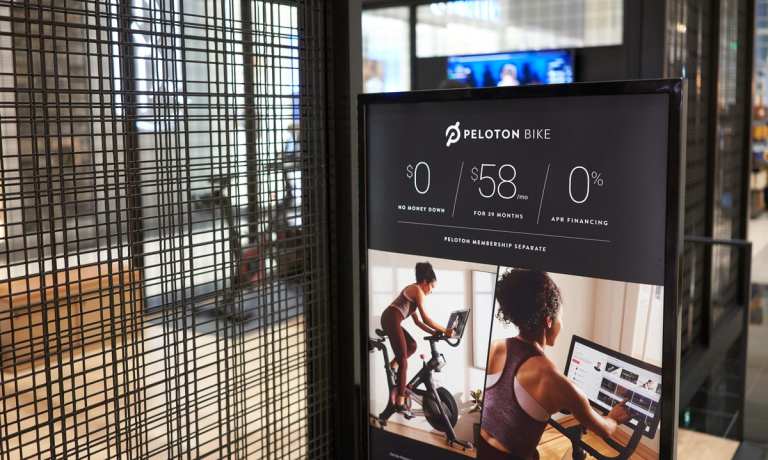Rare is the earnings announcement and subsequent analyst call that starts with a mea culpa from the CEO. Especially one that’s full of good news on the surface. But that’s exactly what happened Thursday evening (Nov. 5) as Peloton CEO John Foley kicked off what was a complete thrashing of revenue expectations for fiscal Q1 2021 by apologizing for not delivering his company’s products on time due to fulfillment and shipping issues.
“It pains us that we’ve been underperforming recently versus the high standard we strive for,” Foley said. “Wait times for our products have been unacceptably long, but none of us could have predicted that we’d see all-time spikes of COVID-19 cases in October and the threat of new lockdowns in our global markets. Higher organic sales growth has been steady since March, and the lowering of our original bike and the launch of Bike + (the company’s new model) has deepened that demand curve. We did our best to estimate the demand for Bike +. But while we are incredibly excited about the positive reaction to the product sales outpaced our internal estimates quickly causing wait times for Bike + to balloon.”
Foley followed his apology with a series of initiatives to catch the company up with demand. Peloton is working swiftly to pivot manufacturing capacity to the Bike + product, which is differentiated from its original bike by a 360-degree monitor on a swivel to facilitate new subscription services for classes such as yoga, aerobics and barre. He said the wait times had been affected by shipping port congestion, periodic warehouse closures associated with the coronavirus, West Coast forest fires and hurricanes. Those are all understandable. But Foley was more upset about what he saw as a disruption of the company’s customer experience, saying that the delays have driven high customer support call volumes and long wait times.
The developments are important not only for Peloton, but for any digital-first company concerned about its supply chain. For Peloton it’s going to be an expensive fix. It is investing in expedited shipping over ocean and land to the point where it cut into Q1 profits and will potentially cut into its Q2 profits.
“We feel that incurring these incremental expenses in the short term is the right trade-off to improve our member experience,” Foley said. “We are working hard to scale our member support team as quickly as possible to handle call volumes and limit wait times getting through to our teams for. Lastly, to give our future members complete transparency, we are communicating clearly on our website. The expected order to delivery dates by product. Please know we’re fully up to the challenge and are 100 percent committed to again delivering the level of excellent customer service our members deserve and expect, but it will take us a bit more time to get there.”
In the meantime, the company’s fiscal Q1 2021 blew through any Wall Street expectations. The company’s business model includes three parts: fitness equipment such as the original Peloton, subscriptions for the company’s equipment-based classes and guided rides and digital subscriptions to classes. Total revenue grew 232 percent to $757.9 million. Fitness Subscriptions grew 137 percent year-over-year to over 1.33 million and digital subscriptions grew 382 percent to over 510,000. Net income of $69.3 million dropped 9.2 percent due to the increased spending on support and shipping.
Advertisement: Scroll to Continue




